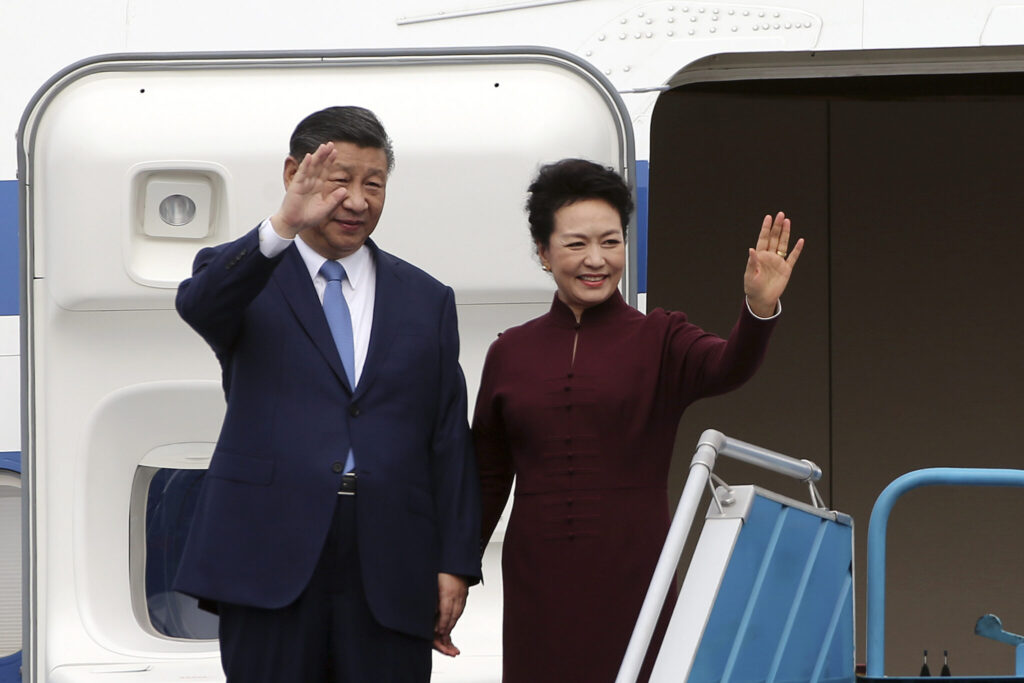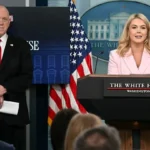Chinese leader Xi Jinping arrived in Vietnam on Tuesday seeking to further deepen ties with the Southeast Asian nation, weeks after it elevated its diplomatic relations with Western-aligned countries.
Quick Read
- Deepening Ties: Xi Jinping’s visit to Vietnam aims to strengthen relations between China and Vietnam, following Vietnam’s recent diplomatic advancements with Western countries.
- First Visit Since 2017: This is Xi’s first trip to Vietnam since 2017. He is scheduled to meet with top Vietnamese leaders, including Communist Party General Secretary Nguyen Phu Trong, President Vo Van Thuong, and Prime Minister Pham Minh Chinh.
- Beijing’s Concerns: Xi’s visit reflects Beijing’s concerns about Vietnam’s growing relations with Western countries and the fear of Vietnam joining an anti-China alliance.
- Red Carpet Welcome: Xi and his wife Peng Liyuan received a warm welcome upon arrival, with officials and citizens from both countries present at the airport.
- 15 Years of Strategic Partnership: The visit marks the 15th anniversary of China and Vietnam’s “comprehensive strategic partnership,” the highest level of diplomatic relationship.
- Vietnam’s Strategic Importance: Vietnam holds significant strategic value in Southeast Asia in terms of security and economy.
- Vietnam’s Western Ties: Despite ideological closeness to China, Vietnam has recently signaled stronger ties with Western countries, including the U.S. and Japan.
- Vietnam-U.S. and Vietnam-Japan Relations: U.S. President Joe Biden’s visit to Vietnam elevated the U.S. to a similar diplomatic status as China. Similarly, Vietnam enhanced economic and security ties with Japan, granting it the same status as the U.S. and China.
- Vietnam’s Geopolitical Strategy: Experts view Vietnam’s actions as a balancing act between major powers, especially given its territorial disputes with China in the South China Sea.
- South China Sea Disputes: Vietnam has ongoing conflicts with China over territories in the South China Sea, particularly the Spratly and Paracel Islands.
- Economic and Infrastructure Focus: The talks are likely to include infrastructure agreements, influenced by China’s Belt and Road Initiative and its high-speed rail project in Laos.
- Trade and Investment: China is Vietnam’s largest trading partner with significant investments in the country, despite the trade deficit favoring China.
- Xi’s Previous Visit: Xi’s last visit to Vietnam in 2017 was for an Asia-Pacific economic summit in Danang.
The Associated Press has the story:
China’s Xi visits Vietnam weeks after he strengthened ties with US & Japan
Newslooks- BANGKOK (AP)
Chinese leader Xi Jinping arrived in Vietnam on Tuesday seeking to further deepen ties with the Southeast Asian nation, weeks after it elevated its diplomatic relations with Western-aligned countries.
In his first visit since 2017, Xi will meet with Communist Party General Secretary Nguyen Phu Trong, President Vo Van Thuong and Prime Minister Pham Minh Chinh, Vietnam’s Foreign Ministry said.
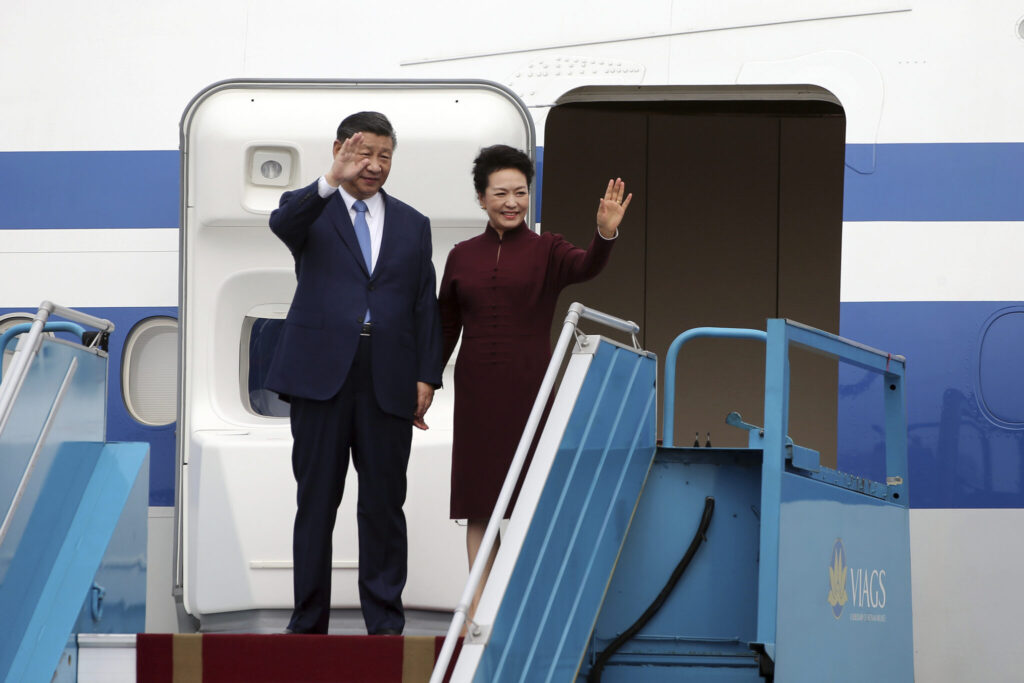
“This reflects Beijing’s concerns about Hanoi’s advances with the West,” said Nguyen Khac Giang, a visiting fellow with the ISEAS–Yusof Ishak Institute in Singapore. “Concerns that Vietnam may join an anti-China alliance and gang up against China.”
The Chinese leader received a red carpet welcome as Chinh greeted him on the tarmac. Dozens of Chinese and Vietnamese nationals gathered at the airport, waving Chinese and Vietnamese flags to welcome Xi and his wife, Peng Liyuan, who accompanied him on the visit.
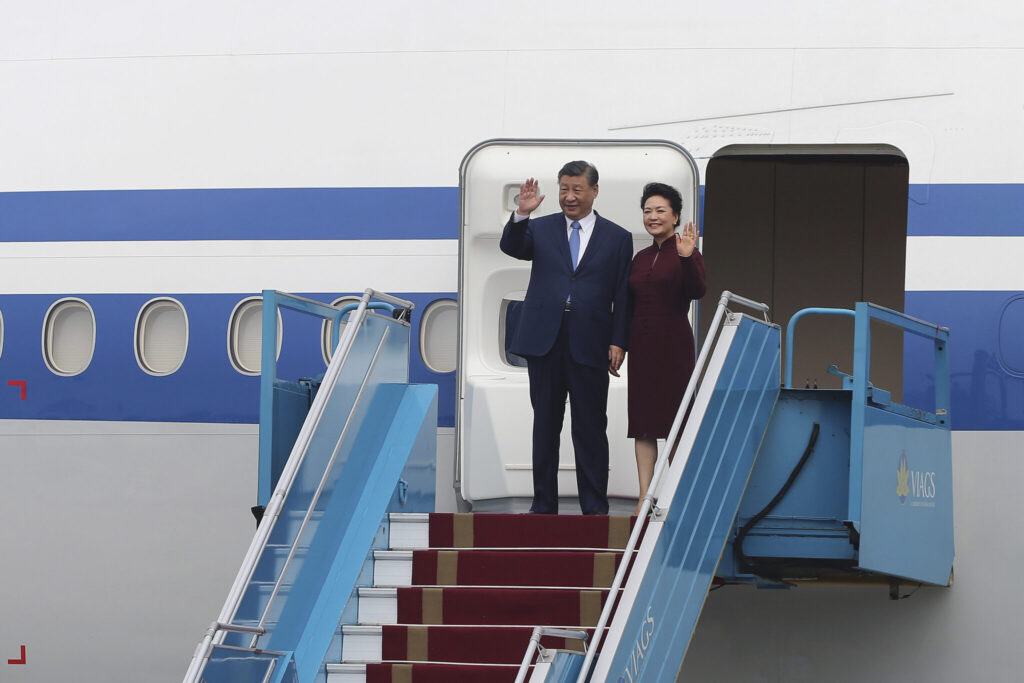
Xi’s visit marks 15 years of China being a “comprehensive strategic partner” of Vietnam, the highest official designation for a diplomatic relationship.
Vietnam plays an increasingly important strategic role in security and the economy in Southeast Asia.
Ideologically, Vietnam is closer to Beijing. It is run by a Communist Party with strong ties to China. But in recent months, Vietnam has signaled closer ties with Western countries.
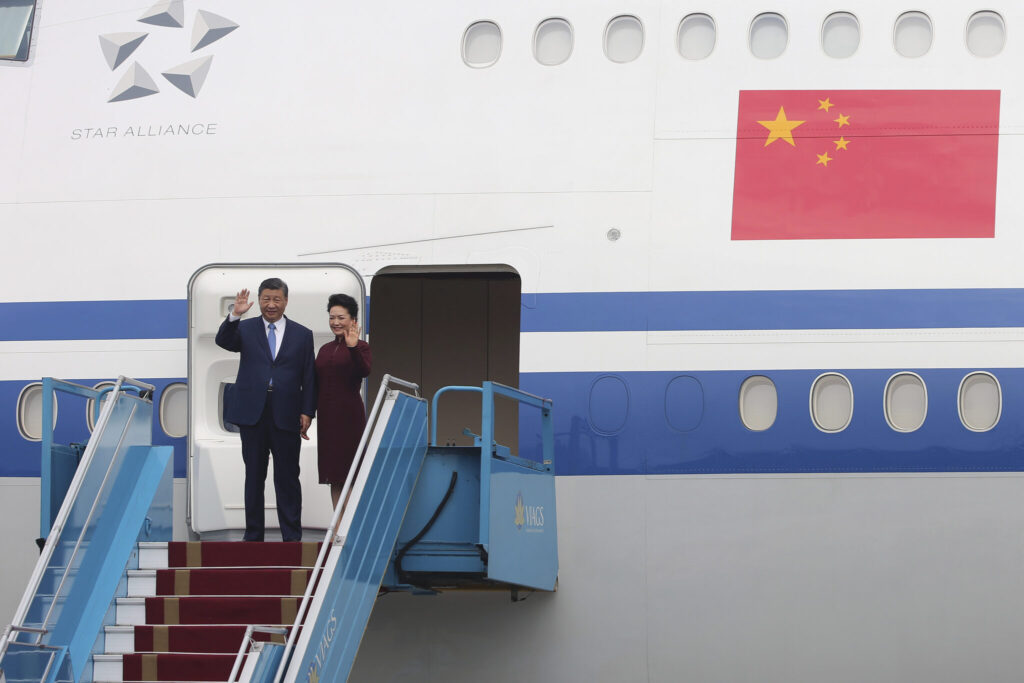
In September, U.S. President Joe Biden visited Vietnam to mark the U.S. being elevated to the same diplomatic status as China. Biden asserted that the stronger ties were not about countering China, though U.S. diplomacy across Asia and the Pacific has been focused on improving defense ties with countries to do just that.
In November, Japan and Vietnam boosted their economic and security ties, citing a “free and open Indo-Pacific,” with Japan being given the same diplomatic status as China and the U.S.. Japan has been rapidly developing closer ties with Vietnam and is its third-largest foreign investor.
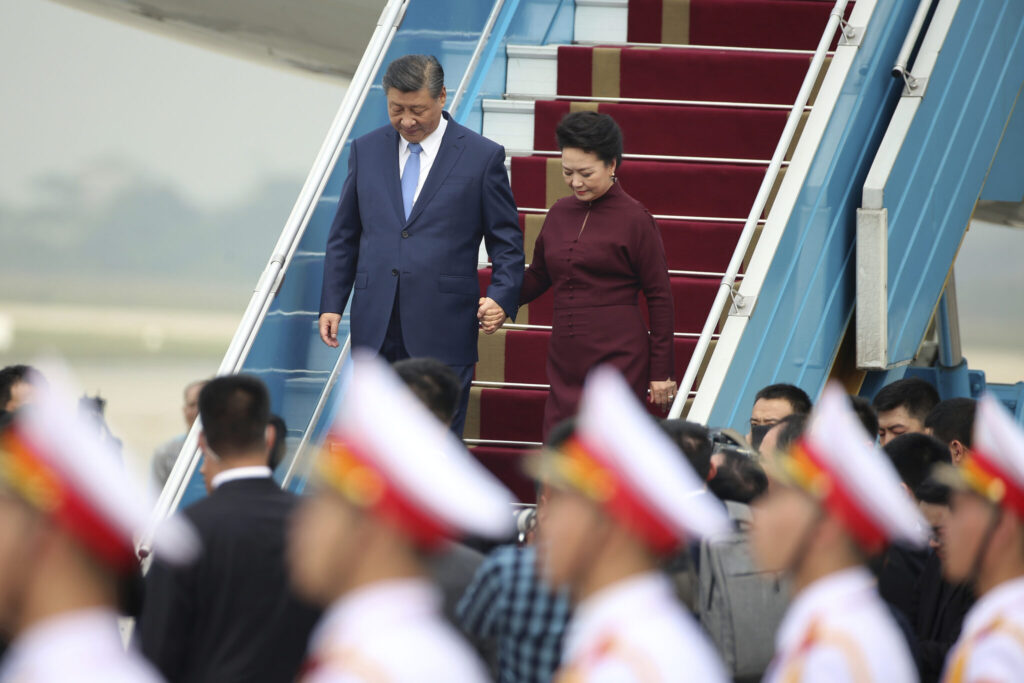
Experts say Vietnam is hedging against its large neighbor and its geographical claims.
“You can see that they’re flexible and balancing big powers,” said Nguyen Thanh Trung, a professor of Vietnamese studies at Fulbright University Vietnam.
Vietnam is one of several countries to clash with China in the disputed South China Sea, particularly on two archipelagos, the Spratlys and the Paracel Islands. It has faced off with China’s coast guard in the past in the disputed waters. Vietnam usually does not publicize the confrontations.
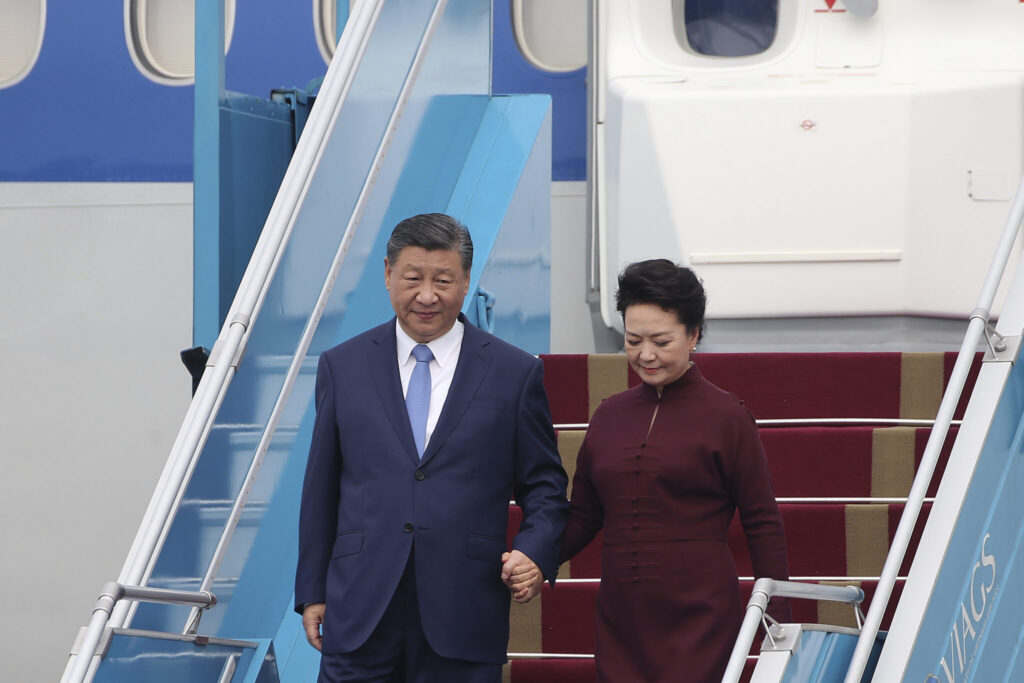
In October, Xi told the Vietnamese president that amid “changing international landscapes” the two nations should continue to develop their “traditional friendship.”
The two spoke after attending China’s Belt and Road Forum. Vietnam is likely to sign some infrastructure agreements with Beijing, as it has paid close attention to the development of the Chinese-built high-speed rail in Laos, completed in 2021.
“The Vietnamese prime minister wants to focus on more infrastructure,” said Nguyen, the professor. “He thinks it’s key to economic growth.”
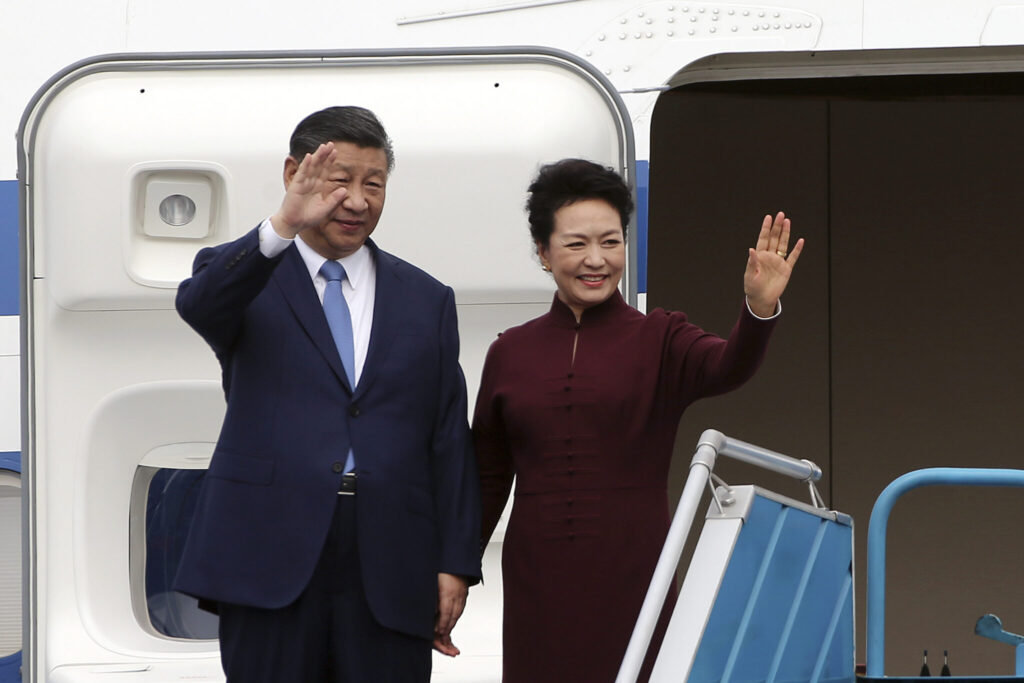
China has been Vietnam’s largest trading partner for several years, with a bilateral trade turnover of $175.6 billion in 2022. Imports from China, including crucial inputs for Vietnam’s manufacturing sector, make up 67%, according to Vietnam customs data cited by Vietnamese state media.
However, the trade is at a deficit in China’s favor.
China has over $26 billion invested in Vietnam, with more than 4,000 active projects.
Xi’s 2017 visit to Vietnam was for an Asia-Pacific economic summit in the coastal city of Danang.

